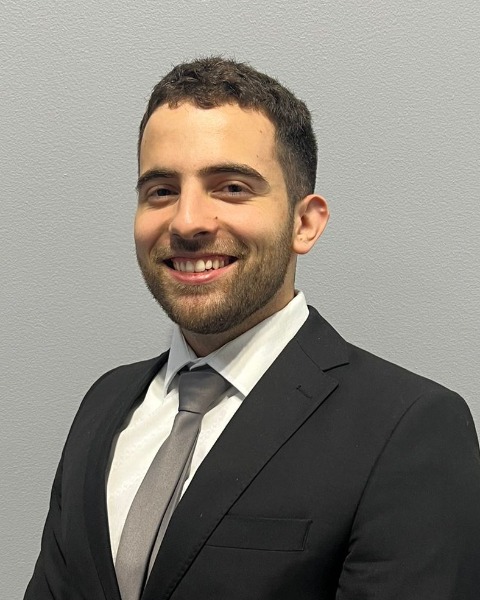Tumor
Comparative Outcomes of Retrosigmoid versus Translabyrinthine and Middle Fossa Approaches for Vestibular Schwannoma: A Systematic Review and Meta-Analysis
Comparative Outcomes of Retrosigmoid versus Translabyrinthine and Middle Fossa Approaches for Vestibular Schwannoma: A Systematic Review and Meta-analysis

Fernando De Nigris Vasconcellos, M.D.
M.D.
UTHealth Houston
Presenting Author(s)
Introduction: Optimizing surgical outcomes in vestibular schwannoma(VS) treatment requires a clear understanding of the different approaches available. The retrosigmoid(RSA), translabyrinthine(TLA), and middle fossa approach(MFA) each offer potential benefits depending on tumor size, location, and patient-specific factors. However, limited direct comparisons exist to guide the selection of these approaches. This study aims to evaluate and compare the outcomes of these approaches to provide evidence for more personalized and informed treatment decisions.
Methods: This study, conducted following PRISMA guidelines, analyzed studies comparing the RSA, TLA, and MFA approaches for VS surgery. A comprehensive search of PubMed, Embase, and the Cochrane Library was performed. Key outcomes included hearing preservation, facial nerve function, gross total resection(GTR), and complications.
Results: We analyzed 6,889 patients from 32 observational studies, with 3,352 (48.7%) undergoing the RSA for VS. Our findings showed no significant difference in hearing preservation between RSA and the MFA RR=1.18 (95%CI:0.76, 1.85,p=0.46), nor in facial nerve preservation when comparing RSA with the TLA RR=0.91 (95%CI:0.77, 1.07,p=0.25) or MFA RR=0.98 (95%CI:0.92, 1.04,p=0.53). Regarding GTR, RSA showed a slightly higher likelihood of achieving resection compared to TLA RR=2.08 (95%CI:0.99, 4.38,p=0.05), but no significant difference was found with MFA RR=1.06 (95%CI: 0.99, 1.13,p=0.09). RSA was associated with a significantly higher risk of hydrocephalus compared to TLA RR=4.93 (95%CI: 1.87, 13.04,p=0.001), though there was no significant difference in cerebrospinal fluid (CSF) leaks when comparing RSA with either TLA RR=1.17 (95%CI:0.91, 1.51,p=0.21) or MFA RR=1.21 (95%CI:0.65, 2.26,p=0.54).
Conclusion : This study compares the RSA, TLA, MFA approaches for VS surgery. While no significant differences were found in hearing or facial nerve preservation, RSA showed a slightly higher chance of gross total resection compared to TLA, though it carried a significantly higher risk of hydrocephalus. No major differences were observed in CSF leaks. These results emphasize the need to customize the surgical approach based on tumor characteristics, including size and location, as well as individual patient factors, to achieve the best possible outcomes.
Methods: This study, conducted following PRISMA guidelines, analyzed studies comparing the RSA, TLA, and MFA approaches for VS surgery. A comprehensive search of PubMed, Embase, and the Cochrane Library was performed. Key outcomes included hearing preservation, facial nerve function, gross total resection(GTR), and complications.
Results: We analyzed 6,889 patients from 32 observational studies, with 3,352 (48.7%) undergoing the RSA for VS. Our findings showed no significant difference in hearing preservation between RSA and the MFA RR=1.18 (95%CI:0.76, 1.85,p=0.46), nor in facial nerve preservation when comparing RSA with the TLA RR=0.91 (95%CI:0.77, 1.07,p=0.25) or MFA RR=0.98 (95%CI:0.92, 1.04,p=0.53). Regarding GTR, RSA showed a slightly higher likelihood of achieving resection compared to TLA RR=2.08 (95%CI:0.99, 4.38,p=0.05), but no significant difference was found with MFA RR=1.06 (95%CI: 0.99, 1.13,p=0.09). RSA was associated with a significantly higher risk of hydrocephalus compared to TLA RR=4.93 (95%CI: 1.87, 13.04,p=0.001), though there was no significant difference in cerebrospinal fluid (CSF) leaks when comparing RSA with either TLA RR=1.17 (95%CI:0.91, 1.51,p=0.21) or MFA RR=1.21 (95%CI:0.65, 2.26,p=0.54).
Conclusion : This study compares the RSA, TLA, MFA approaches for VS surgery. While no significant differences were found in hearing or facial nerve preservation, RSA showed a slightly higher chance of gross total resection compared to TLA, though it carried a significantly higher risk of hydrocephalus. No major differences were observed in CSF leaks. These results emphasize the need to customize the surgical approach based on tumor characteristics, including size and location, as well as individual patient factors, to achieve the best possible outcomes.

.jpg)